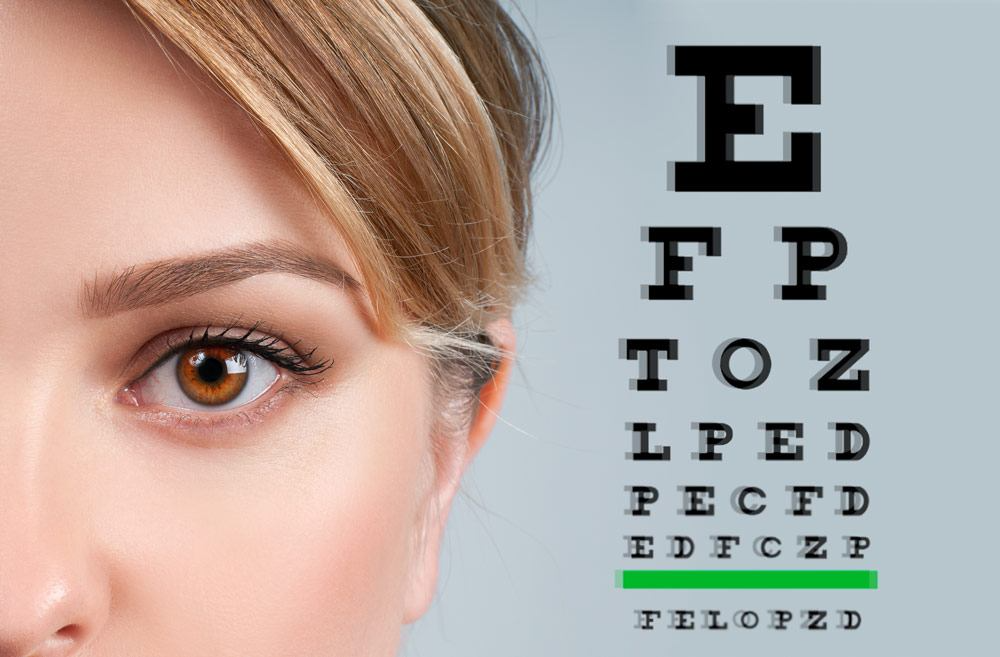What to Know About Double Vision & Cataracts
Sub Title

It can be easy for the majority of us to take for granted that when we wake up in the morning and open our eyes, we see clear and singular images. But if you have ever experienced blurred or double vision, it’s time to make an appointment with your eye doctor.
Double vision or its medical term diplopia, is the simultaneous perception of two images of a single object. There are many causes for diplopia, some severe and others not so much. But one such reason could, in fact, be an early warning sign of a cataract.
A cataract is the clouding of the lens found within the eye that affects our vision. With a clear lens, light may pass through to the back of the eye allowing for clear, well-defined vision. When the lens becomes clouded, from a cataract, for example, the light will not be able to fully pass through the lens resulting in blurred undefined vision. Imagery may appear fuzzy or obscured and you may experience intense glare from light sources. You may even experience noticeable double vision.
What Type of Double Vision
Normal vision is called single binocular vision. Each eye produces its own image and your brain reconciles the two slightly different images together, creating a clear singular vision.
Double vision or diplopia falls into two primary categories: Binocular & Monocular Double Vision
Binocular Double Vision is when double vision occurs in both eyes and it is due to both eyes being unable to work together produce a single image because of eye muscle problems ( the medical term is strabismus). If you can cover either eye and the double vision subsides, it is likely binocular double vision. Binocular double vision can usually be treated either optically (with prism glasses) or surgically (eye muscle – also known as strabismus – surgery).
Monocular Double Vision is when double vision occurs in only one eye. The distorted vision is an effect known as “Ghosting” and is when doubled images appear very close together. Rather than clearly seeing a double image, you may instead see the second image slightly displaced from the main image of whatever it is you are looking at. If you were to cover the unaffected eye, you will still experience double vision.
Sign of a Cataract
It is the monocular double vision that may be an early warning sign of cataract development. When the lens of the eye begins to cloud, light entering the eye may become scattered by the cataract causing multiple but incomplete images.
Since cataracts begin small, they will likely be completely unnoticeable unless caught by a comprehensive eye exam. But as the cataract grows, your vision will begin to show slight signs of change. Your vision may become slightly blurred, colors may begin to fade, and even light sources may appear to be too bright.
Sooner or later though, you will notice a change in visual quality that will require the attention of your eye doctor, like double vision.
Fortunately, if your physician determines that your double vision is caused by cataracts, cataract surgery is one of the most common procedures performed in the United States. Your physician will be able to remove the clouded lens and replace it with an artificial intraocular lens that will vastly improve your vision. The majority of patients report incredibly positive results after surgery and their double vision returns to single vision again.
Learn More About Cataracts & Double Vision Today
There are several warning signs of the development of cataracts and your physician will be able to help you learn what they are and how to keep an eye out for them. If you or a loved one has experienced double vision or wish to learn more about cataracts, please call or contact online the experts at Dougherty Laser Vision. Their experienced and compassionate staff will be happy to assist you in getting set up for a FREE consultation and answer any questions you may have. Take the steps to protect your sight today.

